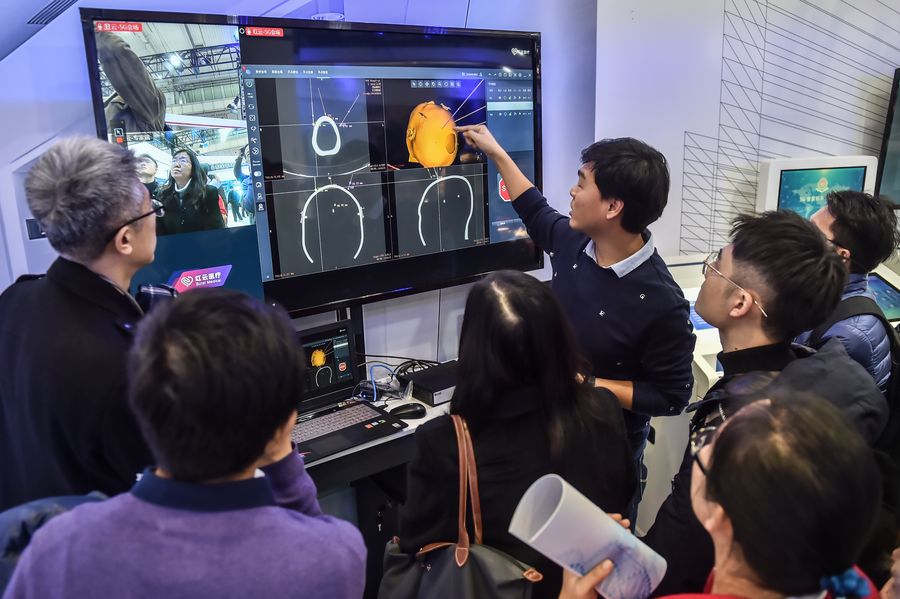
A staff member shows 5G-supported telemedicine technology during the 2019 World 5G Convention in Beijing, capital of China, Nov. 21, 2019. (Xinhua/Peng Ziyang)
China in June officially approved 5G commercial services, marking the start of a smart new era as the application of the superfast wireless technology helps connect more services, sectors and people from all walks of life.
BEIJING, Dec. 29 (Xinhua) -- Wearing VR glasses to check a life-or-death situation in an ambulance, and closely watching the patient's electrocardiogram and ultrasonic images transmitted back in real time, doctors at a hospital in east China's Zhejiang Province remotely guided the paramedics and were fully prepared when the patient arrived.
This scene was a live demonstration by the emergency center of the Second Affiliated Hospital of Zhejiang University School of Medicine (SAHZU), showcasing how 5G technology has facilitated first aid and ushered in a new era for "Healthy China."
"With the help of the 5G network, a real-time and stable digital channel for emergency rescue can be built, which will save a large amount of time and allow doctors to conduct diagnosis beyond the bounds of time and space," said Sun Yun, a product manager with China Mobile.
China in June officially approved 5G commercial services, marking the start of a smart new era as the application of the superfast wireless technology helps connect more services, sectors and people from all walks of life.
Some 126,000 5G base stations have been established across the country so far, according to data from China's Ministry of Industry and Information Technology.
"5G technology will bring a lot more convenience for patients in the near future," said Zhang Mao, director of the emergency department of the hospital, adding that a 5G intensive care unit (ICU) is under construction at the hospital.
The power of 5G can advance integrated and intelligent remote consultation, as well as create a humanized medical environment with artificial intelligence for patients in the ICU, said Zhang.
After leaving the hospital, patients are still able to receive services such as online follow-ups, specialized nursing, digital imaging and pharmacy advice, according to the hospital.
Online medical services, based on brick-and-mortar hospitals, have reshaped and optimized the treatment process from pre-hospital services to post-treatment, making it easier and more convenient for patients to see a doctor, said Ye Xiaoyun, director of SAHZU's customer service center.
Using 5G wireless technology, another 36-year-old female patient in north China's Tianjin Municipality in August received a remote robotic surgery conducted by doctors in Beijing.
The orthopedic surgery, which lasted about four hours, was operated by a surgery robot and preoperatively planned by an expert in Beijing.
Besides the faster delivery speed and more powerful capacity, the 5G-powered technology used in the medical field is more about upgraded telemedicine capabilities, enabling doctors and patients to meet face-to-face over a distance. It also allows early warnings of abnormalities, more accurate autonomous operation of robots and unmanned aerial vehicles and more.
China started to draft standards on hospitals' Internet construction based on 5G in September.
To regulate Internet-based diagnosis and treatment and better leverage the role of telemedicine, provinces like Zhejiang and Shandong have established Internet medical service supervision platforms at the provincial level, while Ningxia has set up an industrial organization of Internet hospitals. ■



